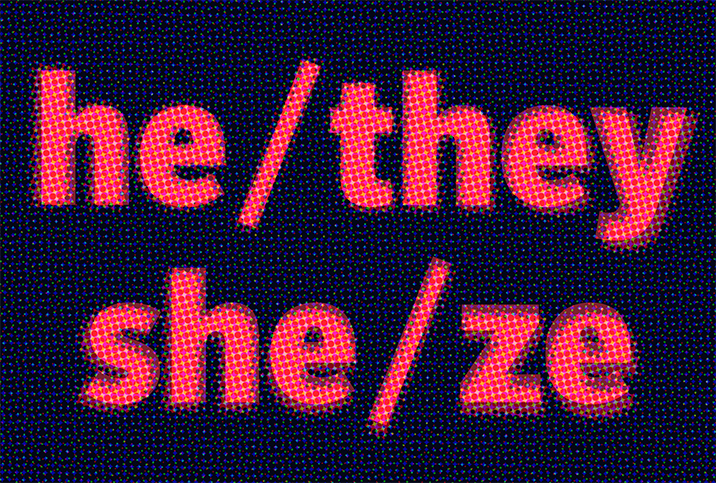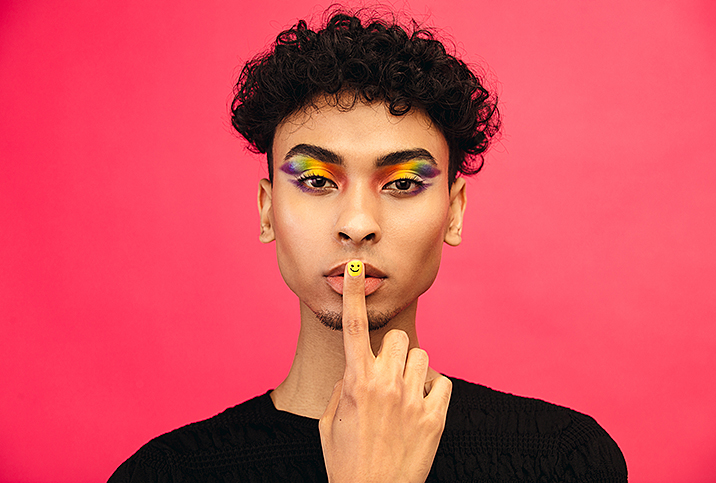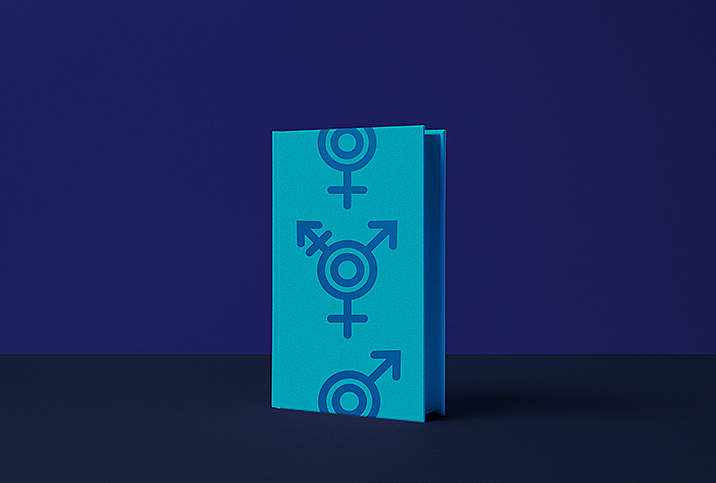A Quickstart Guide to Mixed Pronouns

Pronouns, familiar words we’ve used for centuries, have somehow become controversial in the past few years. But as language continues to develop, so should our knowledge of it.
When Elliot Page came out on social media, they shared that they are trans and that their pronouns are “he/they.” It was an announcement that left plenty of cisgender reporters, and even a few binary trans people, confused. GLAAD put together this guide for writing and speaking about Page specifically, but it seems like there’s a lot to learn.
So, let’s start with the basics. (If you remember grammar school, just hang in there.)
What is a pronoun?
He, she, they, you, we, but also anybody, something, whichever. There are more than 100 pronouns in English. Japanese has more than 700, though they are frequently omitted.
Pronouns act as stand-ins for nouns. It’s the word you use when you don’t want to say or don’t know the name of the thing you’re talking about. For example, in the previous sentence, it and you are used to refer to two different objects.
Having pronouns is not unique to trans people; (almost) everyone uses them. Some use more than one set, even, and others may not use any and are only referred to by name. So what’s common practice when disclosing, using and identifying pronouns?
Sex educator Katie Haan discusses best practices for using mixed pronouns and how to correct yourself if you mess up someone's pronouns. Watch the full interview here.
Who uses mixed pronouns?
The practice of writing pronouns with two or three different variations, such as she/her or she/her/hers, arrived with the advent of neopronouns. A neopronoun is essentially a new variety of singular third-person pronoun that is not part of any established language, created so that it has none of the gender identity baggage of those in our current language. If you aren’t familiar with any of the numerous neopronouns, like xe/xir/xirs or e/em/es, practice makes perfect.
Australian LGBT youth organization MINUS18 created a practice app that allows users to train themselves on these new language skills. Learn neopronouns xe, ze, ey, hir, fae and hu, along with he, she and they.
Sometimes, however, the pronouns on opposite sides of the “/” seem like they don’t match, such as he/they. These are called mixed pronouns and people use them for all different reasons. Mixed pronoun users could be nonbinary, but comfortable with gendered terms; cis, but comfortable with neutral terms; or trans people who are also nonbinary, among many more possibilities.
What do mixed pronouns mean?
Unfortunately—or fortunately, depending on who you ask—there is no good answer to this question. You can’t really assume anything about a person’s gender from pronoun choice alone.
Someone who uses she/they pronouns might be a cis woman (one whose gender identity matches her gender assigned at birth) who doesn’t care what pronouns are used for her. Or, they might be someone who thought they were a cis woman, but now they aren’t so sure, and they want to try on neutral pronouns without making a commitment yet. She could be a demi-gender person or a genderfluid person who experiences different genders at different times.
When a person uses they/he pronouns (note the change in order), they may want those two pronouns used interchangeably. He may be learning about his masculine self while already very comfortable with his nonbinary identity. They may prefer you to use neutral pronouns but want to offer a binary option to people who are uncomfortable with the singular they. The binary option may be a safety measure, to be used in specific contexts only.
A given person might, in fact, use any pronouns, anytime. They could use they most days but he some days and she on others, or they may speak another language with an even more gendered structure.
And this is just the beginning. The short answer: it’s complicated. Just like gender.
Ask, listen, learn
When someone you know and love comes out as trans or changes the pronouns they use, the best way to know what their pronouns mean is to ask them. If someone uses mixed pronouns, ask if they prefer one over the other. Inquire if there is a particular way they want their pronouns used and in what contexts. Is “she” OK at school? Is “they” all right at family gatherings?
Not everyone will have a clear answer for you, but it can’t hurt to show genuine care and sincere interest in understanding and listening.


















